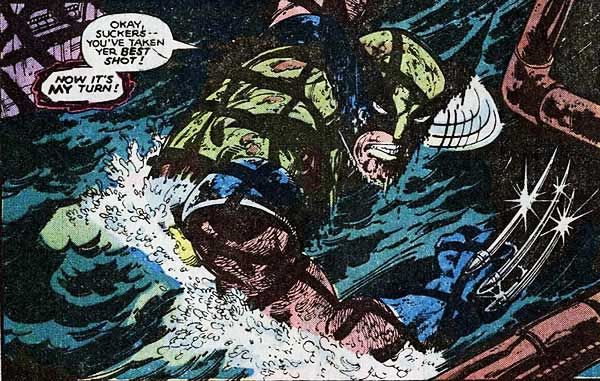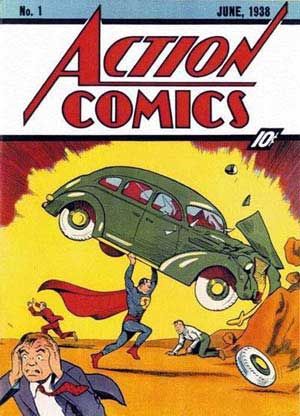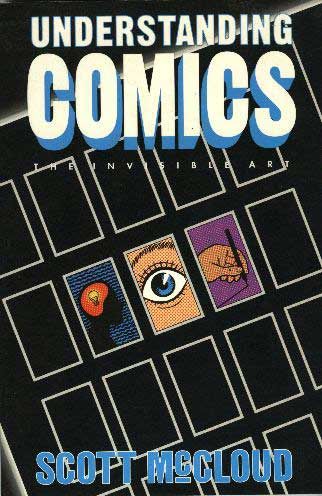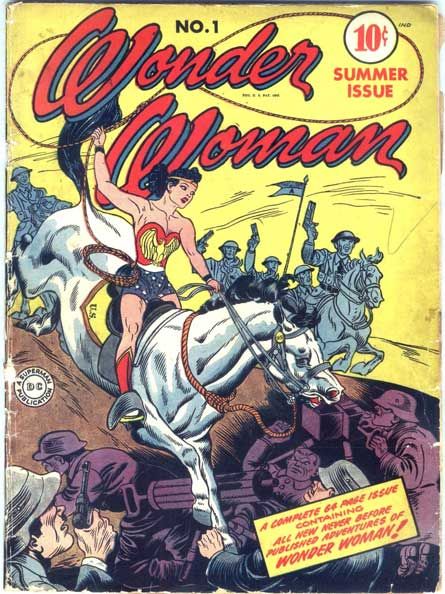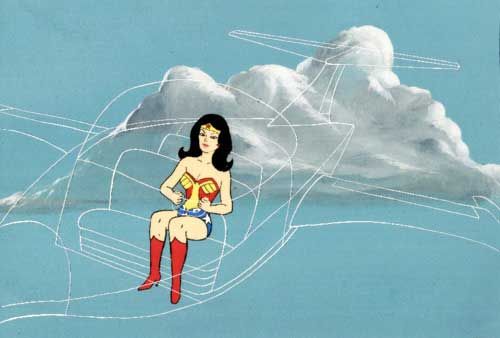The basic superhero touchstones, the ones that stick around for decades, aren't really very complicated. Over time, various individual writers and artists come along to imbue them with contemporary characteristics for a short time, but because none of these things are set in stone they just do not stick, because they aren't part of the DNA of the character. There is always space for the next writer to take things in another direction and for the reader to subject our own ideas upon the character and make him or her our own.
Years ago, in his first Understanding Comics book, Scott McCloud explained that the rougher a drawing was, the more a person could impose their own interpretation up on it, and the more they would be able to identify with it (and I'm paraphrasing the hell out of this because I read and absorbed this information when it came out and haven't read it since.) This was an eye opening moment for me, and the realization that my own love of certain stylized cartooning rather than photo-realistic drawing was finally explained to me in a logical way. I'd always had a strong gut feeling that looser, more "cartooney" drawings worked for me but until McCloud laid it all out, I never understood why. Of course, it makes so much sense, within the simplicity of a simply drawn sketch is the space to impose something recognizable upon it. And as my art teachers always told me in class, when an artist uses fewer lines, there is that much pressure upon each line to speak more evocatively, to be right.
Gradually I have I come to understand that this logic doesn't just apply to art, but also to story. The timeless, iconic, Golden Age superheroes who have stuck around for decades are basically nothing more than a simple sketch of a character. There is nothing about them that is really particularly fashionable or of-its-time. They can be described in a paragraph or less, their primary characteristics and origin stories are vague at best. They are timeless exactly because they were never particularly rooted in the times in which they were conceived.
When Wonder Woman was created, her main thing was being very strong and tying up men. William Moulton Marston had theories about how the subjugation of men by strong women could help us as a society to be more peaceful and less warlike. That was not a particularly fashionable or timely characteristic. Marston wasn't creating a woman to represent the women of his era, he was doing his own thing and so was Wonder Woman. Currently her origin story is in flux, but this is a regular result of the "exquisite-corpse" variety of storytelling that is synonymous with these old superheroes. The hue and cry over these new specifics points to readers discomfort in getting answers to these questions. Whatever happens, she remains an Amazon warrior princess, ambassador to our society from a lost island of women with loose ties to the Gods of Greek Mythology. One sentence, vague origin story, see? In many ways, she's essentially remained the same character while the trappings of each era come and go.
Superman is basically just a really strong guy. His powers are being strong, and flying a bit. I mean, it isn't really that elaborate at all. The basic tenets of his past can be easily explained in a sentence (orphaned survivor of a dead planet, adopts Earth and America as his home.) The only time he seems to have been genuinely and widely reviled was in the 1980's, when he had a "fashionable" haircut, or in the 1990's when he became electric blue Superman. They made him fashionable and contemporary and it just couldn't last.
A similar story can be told of Wolverine. Coming later than his peers above, Logan was a comparatively elaborate character, but because of his amnesia, he had a completely mysterious origin. For a long time no one knew how old he was, where he really came from, or how he got in the hands of the people who applied his adamantium. He was a blank slate upon which a broad range of fans could superimpose their predilictions upon him. Various writers over the years where able to hint at his lost history, using subtle elements to enrich his storylines, always keeping that one element of mystery fluid, never entirely pinning down this wild character. Because of his healing factor, it was implied that he was incredibly old, but this wasn't ever confirmed. For decades his lack of definite origins created an evocative air of mystery around him, and simultaneously for decades he remained popular... Until recently, when Marvel finally spent this precious currency and published his definitely origin story, finally killing his mystique. Of course this is comics we are talking about, and there is no guarantee that this won't be ret-conned out of existence some day, but that's another story.
These superheroes are just a few examples. There are many who are such rough sketches that in a prose novel they would be insubstantial and un-engaging to read about. But this is the elegant little miracle of comic books; the alchemical combination of art can give substance to the writing, the two complement and enrich each other, allowing for more flexible, sketchy characters who feel real to the reader because we can see them.
The major characteristics of superheroes which can stand the test of time aren't fashionable or contemporary, they're vague and incongruous. They maintain their appeal for decades because of (not despite) all the holes in their creation. So many questions are created by their existence, and we as readers are forced to answer them ourselves. As Tim O'Neil wrote (and although he was talking about the Alien franchise, it can apply to pretty much all of fiction) "Mystery is a very powerful tool. It works because our imaginations are almost always more evocative than reality. Mystery is all about potential - once you solve a mystery, once you reveal a secret, you have to be careful you're not losing something far more important in the process. Mystery gives the imagination lots of space in which to play: fill up those wide-open spaces with parking lots and don't be surprised if people go away."
I was going to summarize by saying that there are two major advantages to creating vague sketches of superheroes, but that's understating it. These aren't "advantages", they're gifts, to us as readers and to the comic book creators who work on them as a framework and playground to hang ideas upon. So, these two gifts to us are that first, they allow us as readers to superimpose our own ideas upon them. We can humanize and relate to them more than anyone else, they exist in our imagination with more substance because we as readers are forced to unconsciously elaborate upon their personalities. Secondly, these basic superhero sketches create a tremendous space in the collective storytelling, allowing each new creative team to make different, new, subtle choices about who and what are the important details about them. The roles that these superheroes play in embodying our cultural concerns can flex and change precisely because they were never created with any of those characteristics nailed down. They is a power in the medium that is created by their iconic, simplistic nature, and this can only happen in comic books where sketches in art and literature can combine in our imagination to create flesh and substance.

